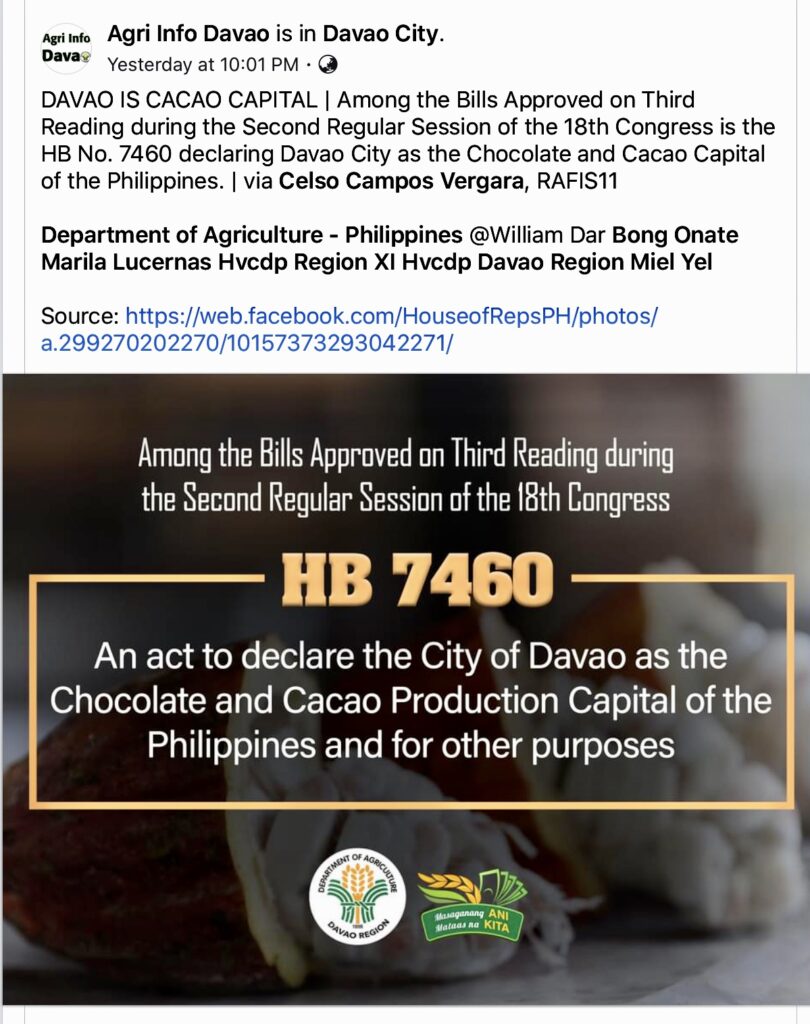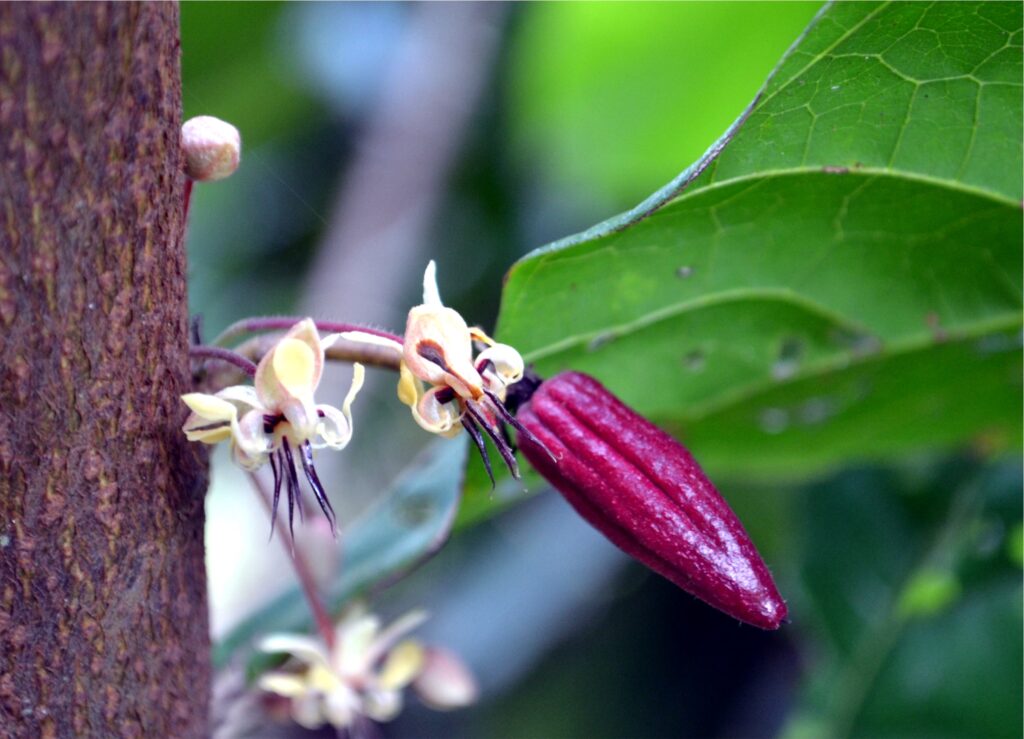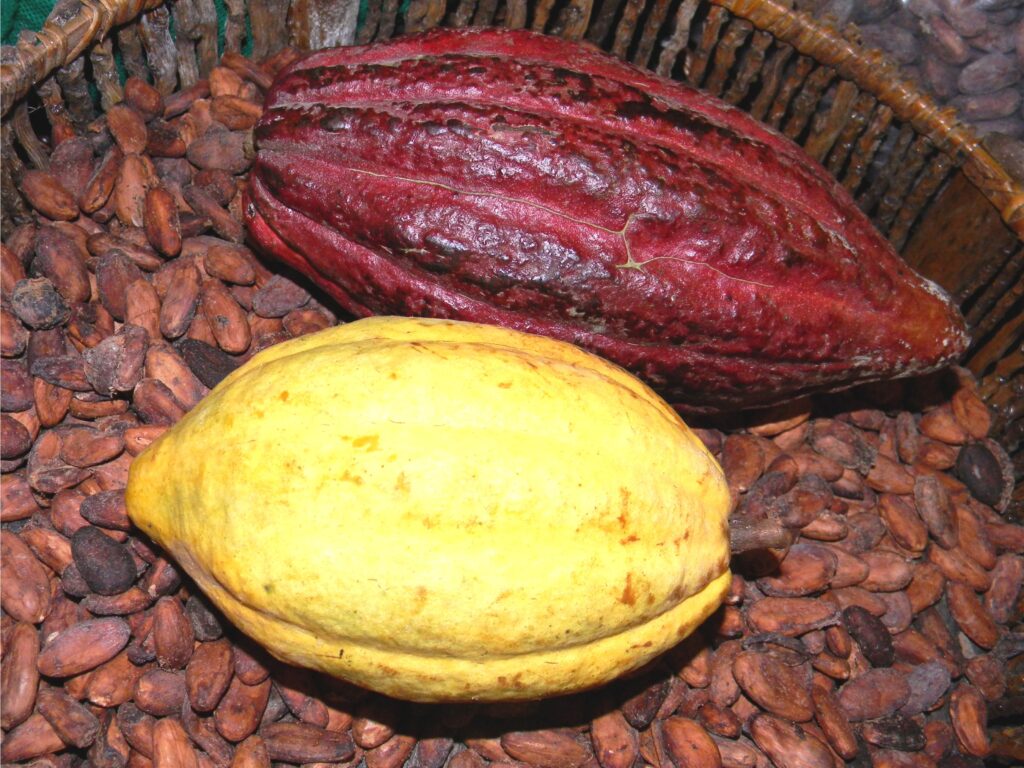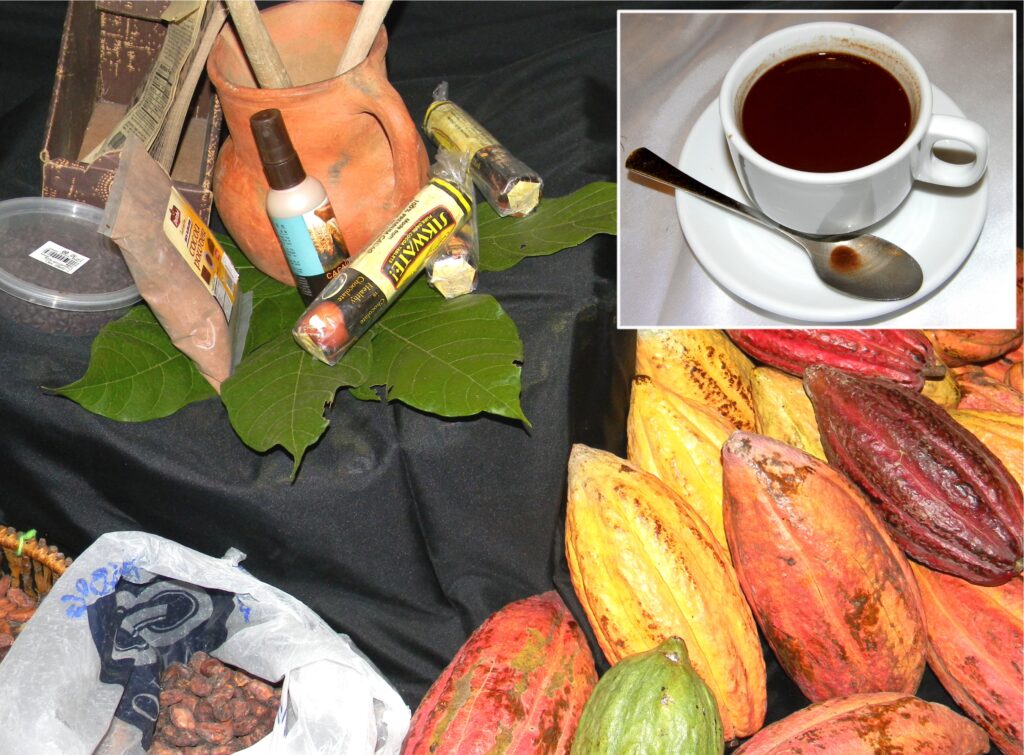Text and Photos by Henrylito D. Tacio
Davao City may be the country’s durian capital, but it is only by word of mouth. Officially, Davao City is now the Philippines’ cacao capital, as declared by Agriculture Secretary William Dar recently.
“Davao City is already known as the cacao capital of the Philippines,” Val Turtur, the president of Cacao Industry Development Association of Mindanao, Inc. (CIDAMI), told EDGE Davao’s roving reporter, Maya M. Padillo. “Even before the declaration, Davao City was also branded as such.”
Three years ago, Turtur passed a resolution asking to declare Davao Region – of which Davao City is part and composed of the five provinces of Davao del Norte, Davao del Sur, Davao Oriental, Davao Occidental, and Davao de Oro – as the cacao capital of the Philippines.
But he didn’t know who the right person would make such an announcement. In fact, he contacted Senator Cynthia Villar, who happens to be the chair of the Senate Committee on Agriculture, to declare the region as such. “At that time, I didn’t know who had the right authority to declare then,” Turtur admitted.
Last year, Secretary Dar made the announcement, and Turtur was ecstatic. “(The declaration) will boost the industry in Davao City,” he was quoted as saying, adding that it is quite challenging. “We need to continue and sustain this title as cacao capital,” he pointed out.

During the Second Regular Session of the 18th Congress recently, among the bills approved on third reading was House Bill No. 7460 or “An Act to declare the City of Davao as the Chocolate and Cacao Production Capital of the Philippines and for other purposes.”
This is good news, indeed. It must be recalled that when Secretary Dar declared Davao as Cacao Capital, Davao City Mayor Sara Duterte-Carpio was equally happy. The basis of the recognition was the high production of cacao beans in the city. From 2015 to 2019, the city registered a production of 2,289 metric tons, which was the highest in the country, as per data from the Department of Agriculture.
In her acceptance speech, she said, “For the past few years now, Davao cacao has been recognized as among the world’s best, with our local brands making waves in international chocolate competitions, and a growing number of Filipino and foreign chocolate makers sourcing their beans here.”
Lester V. Ledesma, in an article that appeared in Smile, the in-flight magazine of Cebu Pacific, wrote: “Today, select beans from Davao reach customers in the United States and Europe through huge, high-end chocolatiers like Switzerland’s Barry Callebaut and commodity brokers like London’s Armajaro.”

“Dry, like a full-bodied well-aged red wine.” That was how Shawn Askinosie, founder of the world-famous Zingerman’s Deli, described a Philippine dark chocolate bar, 77% made from Davao cacao beans.
Cacao was grown in the Davao Region some decades ago. From the late 1960s to the early 1980s, there was massive cacao production in the Davao region. But when prices plummeted in the latter part of the 1980s, farmers started to cut down their cacao trees and planted them to bananas and other crops.
In the late 2010s, Nicolas K. Richards, who was the chief of the party of Agricultural Cooperative Development International and Volunteers in Overseas Cooperative Assistance (ACDI/VOCA), came and told the farmers: “The problem of the (cocoa) market is there’s not enough beans.”
At first, farmers won’t listen to him. But when he showed them statistics, they started to change. At that time, the annual world market needs were 3.6 million tons of cacao beans. The demand at that time was growing annually by 90,000 tons.
“This is really a fantastic situation,” Richards said. “It’s getting worse and worse. The world needs more and more (cacao) beans. Productions (in the Philippines) cannot keep up with the (increasing) demand.”
In 2011, the world produced around 4.25 million metric tons of cacao beans. About 74.8 percent of production came from Africa. Asia contributed around 12.5 percent, the bulk of which came from Indonesia.

Since cacao is considered an equatorial crop (crops that thrive well on regions occupying the equator), the Philippines has a great potential growing cacao. “I really could not believe why we cannot import cacao beans when the Philippines is ideal for cacao growing,” said Jethro P. Adang, director of Mindanao Baptist Rural Life Center (MBRLC). “Mindanao, for instance, is best for cacao production.”
MBRLC is a non-government organization based in Kinuskusan, Bansalan, Davao del Sur. It has been training Filipino farmers on how to grow industrial crops, including cacao. Some of those the center trained were farmer-beneficiaries of ACDI/VOCA.
Aside from having good rainfall and good soil, Mindanao also does not have typhoons. “But cacao would grow anywhere in the country,” Adang says, adding that other areas where cacao is suited for planting are Quezon, Camarines Sur, Camarines Norte, and Palawan.
Turtur urged farmers in the Davao region to plant more cacao trees to meet cacao beans’ global demand. “Our cacao production is not yet that strong,” he admitted, but with the recent declaration, he believed more farmers would go into cacao production.
There are already who think cacao production is a profitable venture. “The livelihood is sustaining,” Gloria de Jesus told Annalisa Burgos of Forbes magazine. “Davao City is the cacao capital. We are encouraged by the government to grow more.”
Cacao beans are in great demand because one of its products – chocolate – is most sought-after by consumers here and abroad. There’s no person in this world who may not like chocolates at all. “Any sane person loves chocolate,” declared Bob Greene. In fact, “nine out of ten people like chocolate. And the tenth person lies,” said John Q. Tullius.

Chemically speaking, “chocolate really is the world’s perfect food,” to quote Michael Levine’s words, the author of The Emperors of Chocolate. As Geronimo Piperni puts it: “Chocolate is a divine, celestial drink, the sweat of the stars, the vital seed, divine nectar, the drink of the gods, panacea and universal medicine.”
Recent studies have shown that chocolate consumption worldwide has been growing at 3% percent annually. “Though the majority of cacao is consumed in North America and Europe, demand is growing more rapidly in Asia where strong economic growth, particularly in India and China, is resulting in more people being able to afford luxury foodstuffs such as chocolate,” according to a position paper written by Adam Keatts and Christopher Root.
Cacao – also called cocoa and known in the science world as Theobroma cacao – was first cultivated by the Mayas around the 7th century A.D. They carried the seed north from the tropical Amazon forests to what is now Mexico. In the 16th century, the Spanish planted cacao across South America, into Central America, and onto the Caribbean Islands.
In the 17th century, the Dutch transported the cacao to other places worldwide like Java, Sumatra, Sri Lanka, New Guinea, and the Philippines. As the Philippines is situated within 120 degrees north and south of the Equator, it belongs to what is called the “Cacao Belt,” an ideal place for growing cacao.
“In 1670, Spanish mariner Pedro Bravo de Lagunas planted the first cacao in San Jose, Batangas,” reports The Philippines Recommends for Cacao.
In the 1950s, commercial cacao farms were established, and cocoa beans production expanded into an industry in the following decade as a group of Filipino investors put up processing facilities. The industry started to take-off in the mid-1980s as more investments were poured on commercial farms and grinding facilities.
While the industry was booming, pod borer infestation surfaced. Control of the disease was quite expensive. As a result, established plantations were again wiped out; others were totally abandoned.
This particularly happened in Mindanao, where most of the cacao crops were grown. In 1990, about 18,388 hectares were planted to cacao, according to the Department of Agriculture.
By 2006, the area declined to less than 10,000 hectares. During this period, production fell from 9,900 tons to about 5,400 tons, with two-thirds of the production coming from the Davao region alone.
The statistics may soon change with Davao City to be declared in the Congress as Chocolate and Cacao Capital. “While it is one thing for our cacao and chocolates to be renowned internationally, to be recognized by the national government is just as important for us, for this is an affirmation and a celebration of the efforts of our cacao farmers and processors, and everyone in the cacao industry,” Mayor Sara said.

